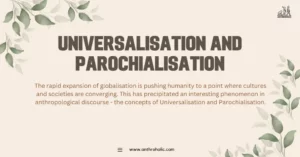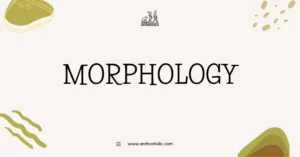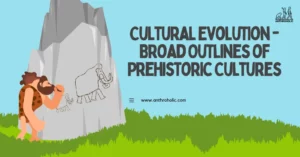AI Answer Evaluation Platform Live Now. Try Free Answer Evaluation Now
Social Organization
The meaning of terms social organisation and social structure indicates uncertainty, anthropologists and sociologists use these terms alternatively. The following discussion is about the term social organisation.

The obligation relationships that exist within and between the groups that make up a particular community are referred to as social organisation.
According to anthropology, a human community structures its connections through social organisation. A community may have a communal or individualistic social structure. These all have various political and fiscal effects. Therefore, many aspects of how members of this species thrive are influenced by their social structure.
A social structure develops over time as a result of the interdependence of its constituent parts. A system gives each of its constituent parts a specific purpose. These components are interconnected and mutually supportive. The system as a whole is made up of the various tasks carried out by the various components with one another’s assistance, and this interaction between its constituent parts is referred to as organisation. It implies that a system functions as a whole. An organisation is a part of a social structure.
Social Organization according to different Anthropologists
- Raymond Firth – Firth has put forth the idea of social organisation, which, in contrast to social structure, is concerned with the transient and mutable character of social reality. According to him, social organisation is the systematic arrangement of social relations according to acts of choosing and decision. It provides for individual decision-making in response to a given situation. People make choices and choose between different behavioural options based on how they perceive how well the goals set by the group to which they belong will be achieved (Firth, 1951).
- Radcliff Brown – Radcliff Brown made a distinction between social organisation and social structure. He claims that social structure is the harmonisation of people. The arrangement of two or more people’s actions is referred to as social organisation. Social clubs, business associations, political organisations, and others are examples of social organisation. Every member of an organisation performs the tasks that have been given to them. The organisation’s characteristic is this configuration of people’s actions. So an organisation is a relationship structure that works within an institution’s operational activities.
The term “social organisation” has a history of being thrown around haphazardly to describe the totality of actions taken within a specific social setting. Therefore, we must comprehend that social structure, which establishes the statuses of actors playing such parts, is more focused on the formal relations between individuals, whereas social organisation, which establishes the roles individuals play in relation to one another, is primarily concerned with social action. We are all conscious that all human groups within a society are organised, and that the various parts work together and independently to function. Social structure entails some degree of unification, or the joining of various components into a single relationship. To achieve this, alternative methods or existing structural principles may be utilised.
- Herbert Spencer – Herbert Spencer, who coined the word “function” for the analytical study of society, saw many similarities between biological organisms and human societies. He held the opinion that various components of society are functionally dependent on one another in order to maintain the integrity of society, much like how connected elements of a machine work to keep the machine functioning in a similar way.
- Durkheim – Durkheim used social phenomena to try to describe this idea.
- Malinowski popularised the word “social organisation” and attempted to define it in terms of the intentional way that people interacted with their surroundings to meet their needs. This is known as the functionalism theory. However, Radcliffe-Brown subsequently altered Malinowski’s idea, emphasising the distinction between the function of the structure and the function of Malinowski.
Social Organisation vs Social Structure
Brown clearly distinguishes between social order and social structure. He claims that while social organisation refers to the arrangement of activities of two or more people that are adjusted to produce a united combined activity, social structure refers to the arrangement of people. His definition of social organisation was the organisation of “roles” connected to “statuses,” which together make up social structure. Levi-Strauss and numerous other anthropologists have constantly referred to what Radcliffe-Brown referred to as “structural form” as “social structure.” The framework of social relations in all societies as well as that within a specific society is referred to as the “social structure” by Lévi-Strauss, which represents an even higher level of abstraction. In 1951, Parsons basically adopted Radcliffe-Brown’s perspective on the relationship between social organisation and social structure, but he also proposed the concept of the social system, which unites the two. Social values, institutional patterns, specialised collectivities (groups), and the roles played by people in these collectivities or groups are the four levels of this system that Parsons differentiated. Even though it probably resembles the typical definition of “social organisation,” Murdock’s (1949) famous book Social Structure seems to suggest a very broad definition of “social structure,” one that has little in common with the more narrow formulations of other theorists.
According to Raymond Firth (1951), societal structure is made up of how parts or elements are arranged. Social organisation is the way that individuals in a society carry out their daily activities. The goal of structural studies is to identify the core social elements that are manifest in the shapes of essential social relations. Similar to how the anatomical framework gives shape to the human body, structural elements give shape to civilization. To define the functions of the community and comprehend the continuity of social life, a study of social structure is essential. On the other hand, social organisation is not just the ideal configuration of interpersonal relationships. It identifies the variables that need to change, i. e., the degree to which social norms vary as a result of various outside influences. As a result, the social organisation will be the actuality if social structure is thought of as a model of action. Firth contends that a structural analysis by itself cannot explain societal change. Analysis of the administrative aspect is necessary for analysis of the structural aspect. Social groups, industrial groups, and sport groups are a few examples of how social organisation is described. When we consider how work is organised in factories, we realise that there are managers, foremen, and other employees who tend to carry out various tasks to ensure the smooth operation of the factory as a whole. This set-up of tasks demonstrates the factory’s organising features (Firth, 1951).
Similar to how military and tribal groups, which show arrangements of people in institutionalised order, can be used to describe social structure. An organisation is therefore a configuration of relationships among all of an institution’s operations. For instance, different household members’ activities might be prone to regular arrangements, and the organisation of these arrangements is the activity itself.
One family’s organisation of tasks may be different from another family’s, even though both homes have the same structural order. By stating that “when we are dealing with a structural system, we are concerned with a system of social positions,” Radcliffe-Brown makes this difference clear. We contend with a system of roles while working in an organisation. When studying social structure, we focus on the entire network of connections rather than the individual relationships themselves.
Example of Garo Society
The Garo society, a matrilineal tribe that primarily inhabits the state of Meghalaya, to gain a clear grasp of the terms social structure and social organisation. The Garos practise matrilocality and observe matriliny in terms of descent and inheritance. They speak a unique vernacular language that is all their own. The Garo community has a typical structure as a result of all these characteristics. In contrast, an organisational study will look at the various traditional aspects of Garo social life, such as family types, clan kinship, marriage, politics, the educational system, and religious practices, as well as the significant changes that have occurred in traditional Garo society as a result of their conversion to Christianity and interactions with other modern Indian societies. An organisational study is a comprehensive examination of a community that takes into account its structural components.
Conclusion
Leach and Raymond Firth both dealt with dynamic or diachronic functionalism; they both disapproved of synchronic functionalism. The character and decisions of people were of interest to Raymond Firth. He concentrates on observed activities while outlining his thoughts on structural-functionalism. He distinguished between social order and social structure. While the arrangement of components or aspects makes up social structure, how members of the community carry out daily activities makes up social organisation.
Firth emphasises the need to distinguish between social structure and social organisation in his book Elements of Social Organization (1951). He contends that the more one considers a society’s structure in terms of interpersonal relationships or idealised patterns, the more one must consider social organisation separately in terms of real-life functioning. Firth summarises,” Individual interests condition the fulfilment of the moral obligations set forth by structural requirements” (MacCulloch and Grimes, n.d.).
References
1. Berndt, R. M. (1955). “Murngin” (Wulamba) Social Organization. American Anthropologist, 57(1), 84–106. http://www.jstor.org/stable/665790 . Accessed on 20 March 2023.
2. Boas, F. (1920). The Social Organization of the Kwakiutl. American Anthropologist, 22(2), 111–126. http://www.jstor.org/stable/659966 . Accessed on 20 March 2023.
3. CERNEA, M. M. (1995). Social Organization and Development Anthropology. Human Organization, 54(3), 340–352. http://www.jstor.org/stable/44126819 . Accessed on 20 March 2023.
4. Parsons, T. (1991). The Social System (2nd ed.). Routledge. https://doi.org/10.4324/9780203992951 . Accessed on 20 March 2023.
5. Cooley C. H. (1963). Social organization; a study of the larger mind. Schocken Books.
6. Barnes, R.H. 2001. ‘Structuralism’. In N.J. Smelser and P.B. Baltes (eds), International Encyclopedia of the Social and Behavioral Sciences. Elsevier.
7. Firth, R. (1951). Elements of Social Organisation. London: Watts.
8. Kroeber, A .L. (1948). Anthropology. New York: Harcourt, Brace.
9. MacCulloch, R., & Grimes, A. (n.d.). Indigenous Belief in a Just World – New Zealand Māori and Other Ethnicities Compared. (PDF) Indigenous Belief in a Just World – New Zealand Māori and Other Ethnicities Compared | Arthur Grimes and Robert MacCulloch – Academia.edu. https://www.academia.edu/24413246/Indigenous_Belief_in_a_Just_World_New_Zealand_M%C4%81ori_and_Other_Ethnicities_Compared . Accessed on 20 March 2023.
10. Murdock, G.P. (1949). Social Structure, New York: The Free Press.
11. Nadel, S.F. (1957). The Theory of Social Structure. London: Cohen & West Ltd.
12. Needham, Rodney. (1962). Structure and Sentiment. A Test Case in Anthropology. Chicago: University of Chicago Press.




